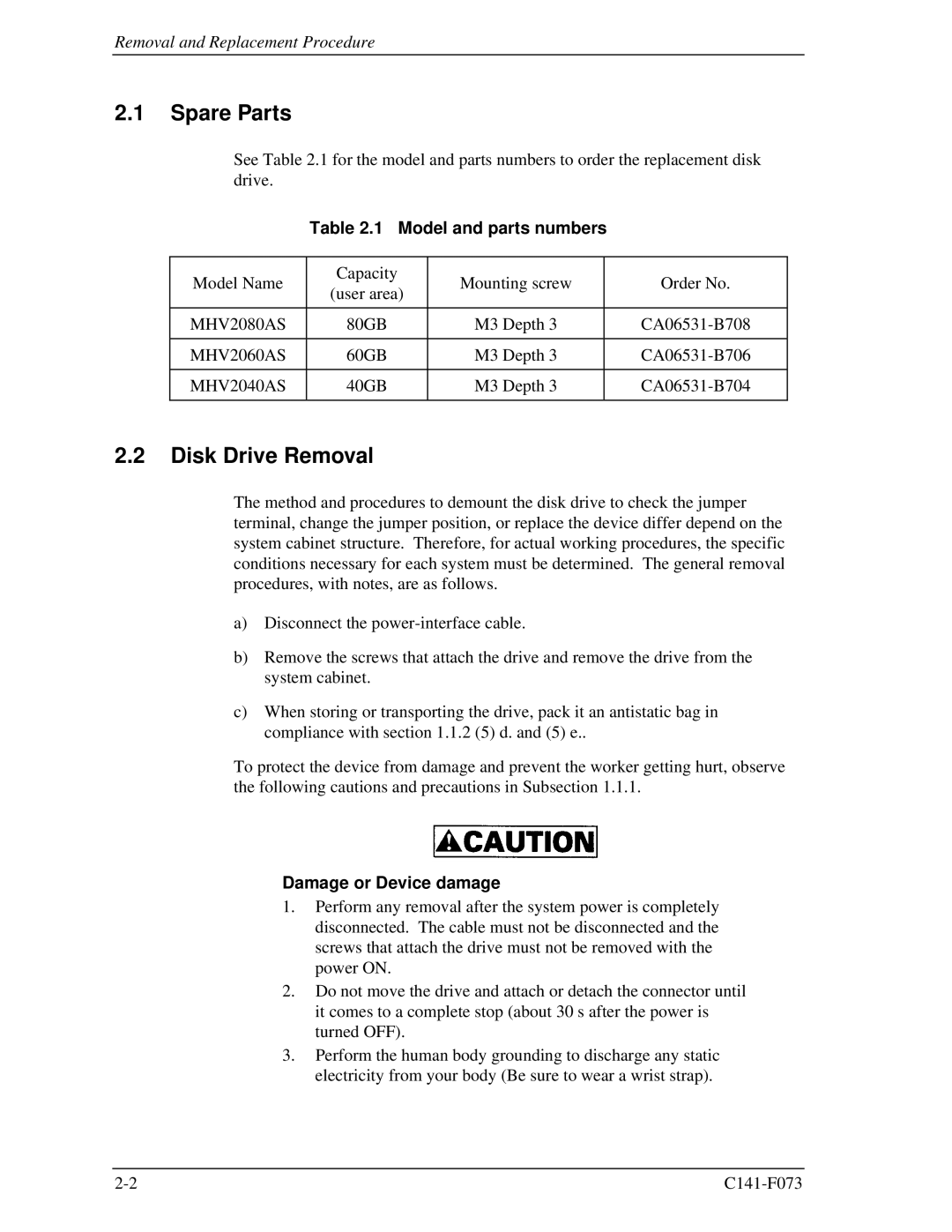MHV2060AS, MHV2080AS, MHV2040AS specifications
Fujitsu's MHV series of hard disk drives, specifically the MHV2040AS, MHV2080AS, and MHV2060AS models, are designed to deliver efficient performance and reliability for a range of applications, particularly in desktop computing and entry-level servers. Each of these drives adheres to the Serial ATA (SATA) interface, which ensures compatibility across a wide range of systems and is known for its cost-effectiveness and simplicity.The MHV2040AS features a storage capacity of 40GB, making it suitable for basic computing tasks including document editing, web browsing, and media playback. The MHV2060AS steps it up with a 60GB capacity, allowing for increased data storage needs while still maintaining a high level of performance. The largest of the trio, the MHV2080AS, offers an impressive 80GB of space, positioning it well for users who require additional room for applications, games, and multimedia files.
All drives in this series are equipped with a rotational speed of 5400 RPM, which strikes a balance between speed and power consumption. This speed is adequate for everyday tasks and allows for quick boot times and file access, making them ideal for home and small office environments. Additionally, the drives feature an average latency of 5.5 milliseconds, contributing to their overall performance in retrieving data.
In terms of technology, the MHV series employs a fluid dynamic bearing (FDB) motor, which not only enhances reliability but also reduces noise levels during operation. The FDB technology helps improve the longevity of the drives by minimizing wear on mechanical components. This characteristic is particularly important for users seeking quieter drives, especially in work environments that require minimal disruption.
The drives also incorporate advanced power management features that significantly reduce power consumption, making them an environmentally friendly choice for users mindful of their carbon footprint. These drives are equipped with energy-saving modes that optimize their performance when not in full use, ensuring lower operational costs and longer lifespan.
Overall, the Fujitsu MHV2040AS, MHV2080AS, and MHV2060AS hard drives provide a solid solution for users looking for dependable storage with a range of capacities to fit their needs. Their performance, combined with noise reduction technologies and energy efficiency, makes them a notable choice for various computing environments, from single-user desktops to small business applications.

